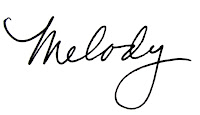

Donna from Canada, wrote me this email:
I have two questions about Paula's quilt, which perhaps you might answer by incorporating the responses into a future post.
1. I see that after you fuse the ferns onto the fabric, you have stitched around each finger of the fern. I cannot see the details, even though I have tried to zoom in. Is the stitching a zig zag stitch, or a blanket stitch? What length of stitch do you use? It looks very precise, but it does not look as though the stitches touch the fingers of each fern, yet I cannot imagine that the fusing is the only thing that keeps it in place. (Forgive my ignorance, as I am just learning to applique, and have only used shelf paper.) On my next trip to the USA, I intend to stock up on Wonder Under.
Perhaps you might be able to enlighten us on your process, but I don't want to keep you from your art, so you don't have to answer this email. I check out your site almost daily, so hope you can give the answers for some future post.
Although it may look like I stitched around ever finger of the fern, I did not. I use a straight stitch (3.0) and never sew down the fused top pieces.
Here's why the fabric does not come up. I use only hand dyed cottons (or silks) and they are unlike commercial cottons in that they do not have a factory coating like Perma Press, Easy Care, Wash and Wear, which would not wash out and would prevent perfect fusing. The PFD fabric is uncoated and the fibers of the cotton bond perfectly with the glue fibers of the fusible, Wonder-Under 805. Fusing is the only thing that keeps each fern frond in place.
My whole teaching and quilting career has been based on making designs with fusing. Think of them as surface design, like painting or stamping or silk screen, except not using paint, but using fabric instead. I have found that any shape idea that comes into my head can be cut and fused into a design.
Here's a shot of Patte's quilt which I plan to quilt today. In this picture you will see mostly silk on silk. I like to dye silk because of its beautiful shine and I like silk charmeuse because it is so tightly woven. I will be stitching in the empty spots of this top and will trust the leaves and dots as well as the stems to stay put.
Click photo twice for a really close up look.
A word about fraying:
When I fuse fabric, I iron the fusible onto the back of the fabric and then REMOVE the paper (after the whole thing has cooled) and never cut the fabric with the paper backing attached. Pulling the paper away from the cut shape encourages the edges to fray. Without the paper, the cut edges are less likely to fray.






Thanks for explaining your process with hand dyes and fusing. I had some of the same questions, but I've mostly fused commercial fabrics and cut with the paper on.
ReplyDeleteYOU ARE FABULOUS ...LOVE YOUR QUILTS AND FOLLOW YOUR BLOG DAILY. THANKS FOR THE HINTS.
ReplyDeleteI'm sure that wonder-under is available online if it isn't in the major fabric stores.
ReplyDeleteOoh, look at those colors in the leaves, turquoise to yellow green and yellow green to yellow. I love, love, love that.
ReplyDeleteWe do not get wonder under either but something called...forgive my spelling...viesoflex which behaves the same ad wonder under by all accounts.
ReplyDeleteLove the new quilt colours yet again.
I'm loving Patte's quilt already!!! I can hardly wait to see it finished! (I already knew about your process....that's how long I've been reading your blog. lol)
ReplyDeleteThanks for sharing the process. Any hints on fusing commercial fabrics?
ReplyDeleteThank you Melody, for the insider information.
ReplyDeleteI appreciate your answer, Melody. That clears up a lot of questions I had. And, you responded with such beautiful photographs of your work. Thank you so much! And thank you to the rest of the commentators for their suggestions about alternatives to Wonder Under.
ReplyDelete